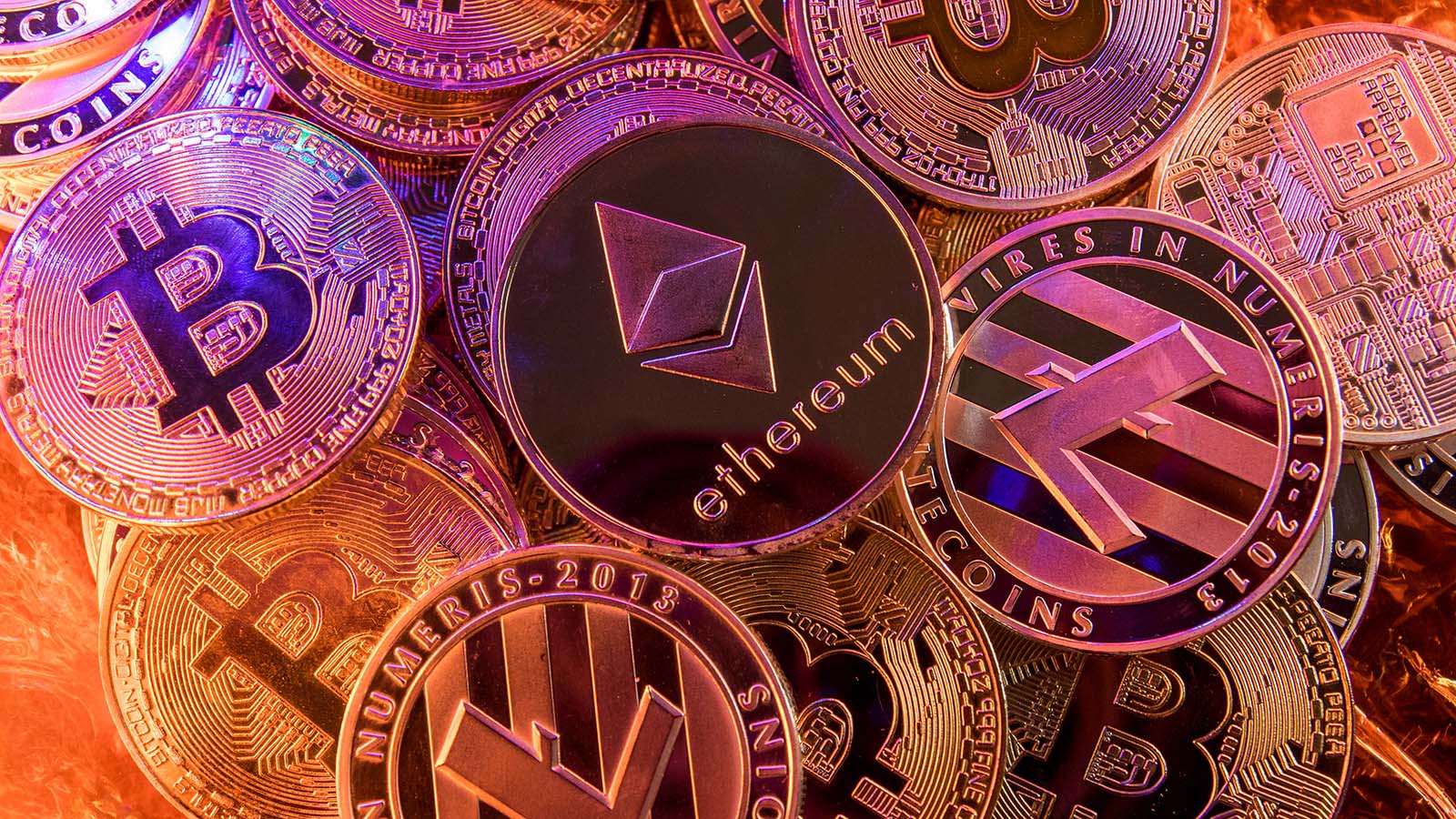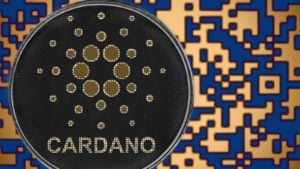
Cryptocurrency has been on a wild ride this year. It started out with a big bang; growth and excitement around cryptos was high for the first half of 2021. In general, all things crypto and decentralized finance (DeFi) really burst onto the scene and made massive waves.
There was volatility during that run up to be sure, but the overall momentum was positive. Markets, pundits and investors of every stripe were eager to understand cryptos and what they mean for the future of finance. Many jumped in hoping to catch the next big thing.
This massive adoption was led by pioneering forces in the cryptocurrency sector. These pioneers will be discussed at length and are probably no secret. As they went, so too went all other cryptos.
When everything went south in May, it was in response to declines in crypto prices. Doubts about the larger sector took hold throughout the summer. Many questioned if crypto was dying. But others believed the downturn was something different entirely: an opening for newer cryptos as those pioneers began to show signs of age.
Whatever the case, the crypto sector turned a corner and rebounded as August began. Crypto looks to be entering a new era, so there’s a lot to be excited about going into the final quarter of the year. These cryptos in particular should fly much higher:
Cryptos: Ethereum (ETH)
Source: shutterstock
The first three cryptos on this list all have two big factors in common. First of all, each one offers digital assets upon which platforms are being built. By now, anyone vaguely familiar with this sector is aware that Ethereum is a vital part of the crypto space.
Secondly, Ethereum, Cardano and Binance Coin were all explicitly named in a 140 page report recently issued by Bank of America, which is very supportive of a crypto future.
That report is titled, Digital Assets Primer: Only the first inning. This implies Bank of America expects cryptos to experience massive growth. And if this leading financial institution sees that as the case, that signals much more — and other big banks are likely to follow suit.
Thus, institutional clients and more traditional investors are increasingly likely to view Ethereum and other cryptos as potential investments. More interest leads to greater demand, which leads to higher prices.
Ethereum itself has become a fairly polarizing crypto. Some believe it is a has-been while others think it will multiply in price. The truth is that Ethereum still has a dominant place in the decentralized app (dApp) development space.
Others, including Cardano, are scratching away at that position. But the future really depends on when Ethereum 2.0 is implemented and how much the upgrades improve the platform.
That will take time. But my theory is that Ethereum will soar in Q4 as a leading name that traditional investors flock to when more big banks show optimism about crypto.
Cardano (ADA)

Source: Stanslavs / Shutterstock
Again, Cardano bears a lot of similarities to Ethereum. Generally, the two are seen as competitors, with many speculating that Cardano could someday dethrone Ethereum.
Given that Ethereum is worth more than $3,400 and Cardano costs about $2.11, you can see the allure. If Cardano usurps Ethereum in time, it could multiply several hundred-fold in value.
Of course, no one knows what price Cardano — or any other crypto — will reach. No one has any reasonable model by which to accurately gauge future prices because there are so few precedents in crypto.
Anyway, Cardano has been making news in recent weeks and months. Most recently, it launched smart contract functionality. That hard fork, known as Alonzo, marks a new chapter in the life of this Ethereum challenger.
Cardano had been criticized for failing to launch smart contracts on its network. If it was truly a challenger to Ethereum, the criticism went, then why didn’t it have smart contract functionality yet? Better late than never, I’d say.
More to the point, the Alonzo hard fork has largely been a success. Projects based on that new functionality should be arriving soon, and Cardano ought to appreciate in price through the remainder of 2021.
Cryptos: Binance Coin (BNB)

Source: Shutterstock
Binance Coin rounds out the three cryptos explicitly named in the Bank of America report mentioned above.
Binance itself is a leading cryptocurrency exchange that created its own coin, Binance Coin. The crypto is pegged to the U.S. dollar at a value of one-to-one.
There are multiple factors making Binance Coin very attractive. But a narrative underpinning its rise in Q4 goes something like this: As demand materializes from more reports that legitimize Binance, potential investors will begin to dig deeper into the exchange, coin and platform.
What investors will see is a crypto tied to its own exchange, which gives it an advantage in terms of adoption. They also will learn that Binance has approval from the New York State Department of Financial Services for limited transactions.
And finally, investors will note Binance Coin’s compatibility with the Ethereum platform. That lends a degree of stability many other assets lack and gives it the credibility newbies seek.
Bitcoin (BTC)

Source: Momentum Fotograh / Shutterstock.com
Bitcoin has experienced a massive resurgence over the past two weeks. At the end of September, the price hovered around the $43,000 mark. Fast forward to Oct. 13, and the price has risen above $55,000.
The question is, what is underpinning this surge in demand and price? Well, it’s pretty simple. Bitcoin is reemerging as a hedge against inflation. It’s no secret that investors are worried about this, as more and more signs indicate the problem could be more than transitory.
However, gold — the traditional inflation hedge — is not reacting in kind. Gold prices are down year-to-date.
JP Morgan analyst Nikolaos Panigirtzoglou sent a note which explains that institutional investors are replacing gold with Bitcoin as a hedge against inflation.
To me, this is a reaffirmation of the idea that Bitcoin is the new gold. It’s beginning to feel like a whole new cadre of investors are piling into crypto at this moment. Institutions are clearly sending signals to the market.
Bitcoin is set to rise further as inflation woes pick up steam. I wouldn’t be surprised if it surpasses former highs soon.
Cryptos: Polkadot (DOT)

Source: Zeedign.com / Shutterstock.com
Investors have to identify trends in order to capitalize. That’s as true for cryptos as it is for stocks. The next two cryptos on this list are hopping on one such trend: They are intermediaries in the ongoing evolution of Web 3.0.
There are many disparate projects across the DeFi and crypto landscape. All of them seek to decentralize and democratize data to some degree. That’s part of the overarching promise of Web 3.0 in general.
Once that decentralization and democratization occurs, another issue arises: How can these disparate data blockchains interact with one another?
That’s where Polkadot comes in. It allows interoperability of data and tokens across blockchains. Many crypto projects are attempting to carve out a dominant position as the standard bearer in this function. Polkadot is one of the leading names in that conversation. Its function has been likened to that of HTML for the internet.
As a result, Polkadot’s token should rise based on its role in fulfilling vital functions of Web 3.0.
Chainlink (LINK)

Source: Stanslavs / Shutterstock.com
The same narrative that underpins bearishness in Polkadot applies to Chainlink. Basically, it serves to connect — particularly for smart contracts located on disparate blockchains.
I recently wrote about Chainlink a few weeks ago and highlighted what it can bring to the crypto sphere:
“Blockchains can be thought of as being isolated in a sense. While they are difficult for bad actors to manipulate by design, there is a problem: each blockchain functions independently. Users don’t have any inherent ability to send data from one blockchain to another.
Chainlink is working to fix that. Chainlink acts as a central hub for other blockchains. It’s basically a conduit or intermediary which receives data from one blockchain and sends it to another. That role is central to information transfer.”
As you can see, Chainlink also has a key role to play in the shift to Web 3.0. Its token can rise, like Polkadot, on its potential to dramatically improve the blockchain user experience.
Cryptos: Avalanche (AVAX)

Source: Hakan GERMAN / Shutterstock
Speed is a key component of crypto, and that’s the main appeal of Avalanche. It boasts the “fastest smart contracts platform in the blockchain industry,” according to its site.
The world of crypto admittedly remains quite opaque to me, even though I often write about it. That said, some things are crystal clear. Quicker transactions mean more attractive projects in the world of DeFi, blockchain and cryptos.
According to its site, Avalanche allows 4,500 transactions per second through its network. In comparison, Polkadot can handle 1,500, Ethereum can do 14 and Bitcoin processes a mere seven transactions per second.
When it comes to the time required to finalize a transaction, Avalanche again shines. It requires less than two seconds to finish a transaction. Polkadot performs the process in a minute and Ethereum takes six minutes, while Bitcoin users wait an hour for their transaction to be completed.
Furthermore, Avalanche was recently listed on Coinbase’s (NASDAQ:COIN) Pro platform. This will bring increased liquidity to AVAX and potentially raise its price. It’ll also grant the token increased exposure, again exerting positive price pressure.
FREE REPORT: 13 Cryptos Ready to Rocket Like Dogecoin
Ready to start trading cryptocurrency but unsure of what to buy? Thomas Yeung found Dogecoin before it went up 8,000%… Cardano before it went up 460%… and Ripple before it went up 480%. Now, in a new report, he’s naming 13 of his favorite cryptocurrencies — tokens that could soar as high as DOGE. Claim your FREE COPY here.
On the date of publication, Alex Sirois did not have (either directly or indirectly) any positions in the securities mentioned in this article. The opinions expressed in this article are those of the writer, subject to the InvestorPlace.com Publishing Guidelines.
Alex Sirois is a freelance contributor to InvestorPlace whose personal stock investing style is focused on long-term, buy-and-hold, wealth-building stock picks. Having worked in several industries from e-commerce to translation to education and utilizing his MBA from George Washington University, he brings a diverse set of skills through which he filters his writing.
This news is republished from another source. You can check the original article here

Be the first to comment